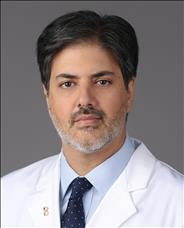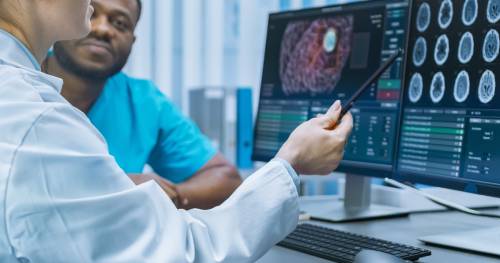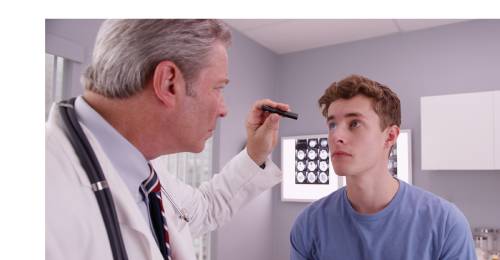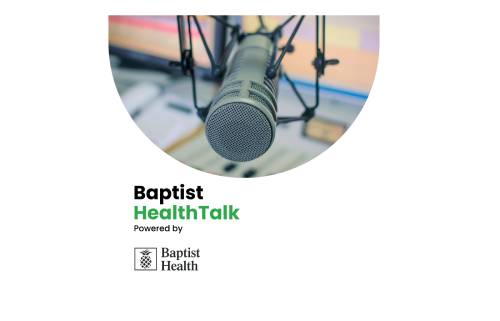
Science
What You Need to Know About Brain Aneurysms and Their Care
4 min. read
Baptist Health Miami Neuroscience Institute
Learning you have a brain aneurysm can be alarming, but this condition is more common than most people realize and advances in care have improved the prognosis for many.
In the United States, an estimated 6 million people — 1 in 50 —have an unruptured brain aneurysm. Aneurysms form inside the brain when a blood vessel weakens and begins to bulge. For many people, an unruptured aneurysm never causes symptoms. In fact, many people learn that they have a brain aneurysm only incidentally when they seek treatment for a different condition and the bulge is detected during diagnostics like MRIs or CT scans.
However, roughly 30,000 people in the U.S. will experience an aneurysm that does rupture. This is a life-threatening medical emergency. When blood leaks from the weakened spot, it can cause a hemorrhagic stroke and severe complications. Approximately 25 percent of people who experience a ruptured aneurysm die within 24 hours, statistics show. Another 25 percent experience complications and die within six months.
Those who survive may experience ongoing challenges — that’s why seeking rapid treatment by experts is key.

Guilherme Dabus, M.D., co-director of interventional neuroradiology and vice-chief of neuroscience at Baptist Health Miami Neuroscience Institute
“A ruptured aneurysm may have catastrophic consequences in 70 percent of the cases,” says Guilherme Dabus, M.D., co-director of interventional neuroradiology and vice-chief of neuroscience at Baptist Health Miami Neuroscience Institute. “Early detection and appropriate medical management are crucial.”
September is National Brain Aneurysm Awareness Month, an opportunity to educate people about the seriousness of cerebral aneurysms and the importance of timely response.
Not all brain aneurysms require intervention, as most don’t rupture. Experts at Miami Neuroscience Institute and Marcus Neuroscience Institute, both part of Baptist Health Brain and Spine Care, are highly trained in evaluating individual cases to determine if the risk of rupture outweighs the risk of treatment. Factors include the aneurysm size and shape, its location and overall appearance, the patient’s age and general health, and the patient’s family history.
“All of these can influence the treatment approach, which may range from observation over time to surgical interventions or different types of endovascular procedures,” Dr. Dabus says.
The same treatments for repairing a ruptured brain aneurysm may, in some cases, be considered to treat an unruptured aneurysm.
Microsurgical clipping is a procedure to close off an aneurysm. The neurosurgeon removes a section of the skull to gain access to the brain, then places a tiny metal clip on the neck of the aneurysm to stop blood from flowing into it.
Endovascular embolization treatment involves accessing the aneurysm without “open surgery” by threading a small plastic tube called a catheter through an artery, usually starting at the wrist or groin. Upon reaching the aneurysm, a wide variety of devices and techniques can be used to prevent blood from flowing into the aneurysm.
Research indicates less invasive endovascular treatment have fewer complications, although surgical clipping is still appropriate under certain circumstances.
“We tailor the treatment plan to each patient’s unique situation,” Dr. Dabus says.
To help improve public awareness of aneurysms and their treatment, Dr. Dabus, who also serves as the Vice-Chair of the Department of Neuroscience and Co-Director of the Interventional Neuroradiology Program at Baptist Health Miami Cardiac & Vascular Institute and Miami Neuroscience Institute, answers these questions:
Are there any symptoms patients should know about?
Most aneurysms may be completely “silent” and asymptomatic until they rupture and bleed, causing an abrupt and very severe headache — generally described as “the worst headache of someone’s life.” In those circumstances, seek immediate medical care. Some other common symptoms include headaches, visual disturbances, neck pain and difficulty speaking.
Are there any risk factors?
Risk factors include high blood pressure, smoking, and certain medical conditions. Also, an important risk factor is a family history. Aneurysms seem to affect about 2 percent of the population on average. But that doubles for patients with one affected family member; they have approximately a 4 percent risk of having an aneurysm. Patients with two or more affected first-degree family members have an 8–10 percent risk of having an aneurysm. Some medical conditions also increase your risk, including polycystic kidney disease, Marfan syndrome, Ehlers-Danlos syndrome, fibromuscular dysplasia, and arteriovenous malformations.
How does Baptist Health Brain & Spine Care approach treatment for brain aneurysms?
Miami Neuroscience Institute and Marcus Neuroscience Institute are known for their multidisciplinary approach, combining the expertise of neurosurgeons, interventional neuroradiologists, neurointensivists and other specialists to provide comprehensive care.
Is there anything that differentiates the care provided by Baptist Health Brain & Spine Care?
I would say the access to cutting-edge technology, state-of-the-art facilities, and experienced world-renowned physicians — but mostly the collaborative team approach and a focus on personalized treatment plans tailored to each patient's unique situation.
What kind of recovery can be expected from this condition?
Recovery varies depending on factors like the type of treatment, the individual's overall health, and more importantly if the aneurysm was unruptured or ruptured. In general patients that are treated for unruptured aneurysms usually stay one night in the hospital and go back home the following day. Patients that come in with ruptured aneurysms usually stay in the hospital for at least two weeks and in some cases may need rehabilitation.
Has survivability improved in recent years?
Yes, advancements in medical technology, surgical techniques, ICU and post-operative care have led to improved outcomes and increased survivability for patients with brain aneurysms. Advances in endovascular techniques, imaging technologies, and minimally invasive procedures have been notable. Additionally, ongoing research may lead to further breakthroughs in the future.
Healthcare that Cares
Related Stories
View All Articles
Baptist Health, FIU’s Herbert Wertheim College of Medicine Partner in New Clinical Trial That Could Revolutionize Care for Alzheimer’s Patients
March 28, 2024
2 min. read

Brain Injury Awareness: Understanding Immediate and Long-Term Neurological Effects
March 27, 2024
3 min. read
